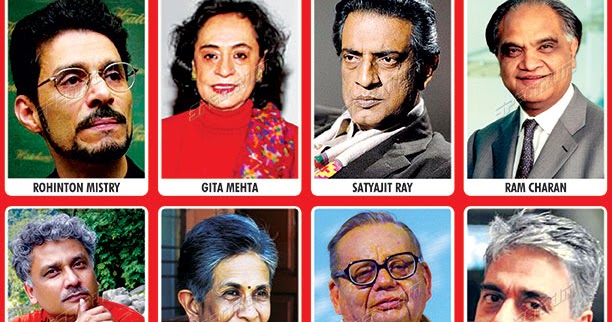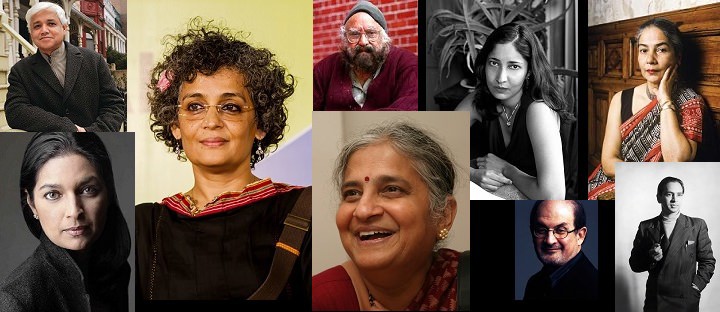Table of Contents
India’s literary tradition is as diverse and rich as its cultural heritage. While the works of Rabindranath Tagore, R.K. Narayan, and Arundhati Roy are celebrated worldwide, there exists a treasure trove of lesser-known but equally influential authors who have significantly contributed to Indian literature. This blog post aims to uncover these hidden gems, highlighting their works and the impact they have had on Indian literature and beyond.
1. Ismat Chughtai
Notable Works: “Lihaaf” (The Quilt), “Terhi Lakeer” (The Crooked Line)
Ismat Chughtai was a pioneering Urdu writer known for her bold and progressive narratives that addressed themes of female sexuality, gender discrimination, and social injustice. Her short story “Lihaaf” (The Quilt) caused a scandal when it was published in 1942 due to its portrayal of a lesbian relationship, but it also established her as a courageous voice in Indian literature. Chughtai’s works often depict the struggles of women in a patriarchal society, and her unapologetic approach to taboo subjects has inspired generations of writers.
2. Gopinath Mohanty
Notable Works: “Paraja,” “Mati Matala” (The Fertile Soil)
Gopinath Mohanty, an acclaimed Odia novelist, is celebrated for his deep exploration of the lives of tribal communities in Odisha. His novel “Paraja” is a poignant portrayal of the struggles of the Paraja tribe against exploitation and marginalization. Mohanty’s intricate characterizations and evocative descriptions bring to life the cultural richness and social challenges faced by these communities. His contributions to Indian literature have earned him prestigious awards, including the Jnanpith Award.
3. Indira Goswami
Notable Works: “The Moth Eaten Howdah of the Tusker,” “Pages Stained with Blood”
Indira Goswami, also known as Mamoni Raisom Goswami, was a prominent Assamese writer and social activist. Her novels and short stories often focus on the plight of women and marginalized communities. “The Moth Eaten Howdah of the Tusker” delves into the lives of widows in Assam, highlighting their struggles and resilience. Goswami’s works are known for their lyrical prose, deep empathy, and strong feminist undertones, making her a significant figure in Indian literature.

4. Mahasweta Devi
Notable Works: “Hajar Churashir Ma” (Mother of 1084), “Rudali”
Mahasweta Devi was a Bengali writer and activist whose works fiercely advocate for the rights of tribal communities and the oppressed. Her novel “Hajar Churashir Ma” tells the story of a mother grappling with the death of her son, a Naxalite revolutionary, highlighting the human cost of political conflict. “Rudali” portrays the struggles of a low-caste woman in rural India who becomes a professional mourner. Devi’s powerful storytelling and commitment to social justice have left an indelible mark on Indian literature.
5. Mulk Raj Anand
Notable Works: “Untouchable,” “Coolie”
Though not as obscure as some others on this list, Mulk Raj Anand’s contributions to Indian literature are often overshadowed by his contemporaries. His novel “Untouchable” is a seminal work that exposes the harsh realities of caste discrimination through the story of Bakha, a Dalit boy. “Coolie” portrays the exploitation of Indian laborers and the socio-economic injustices they endure. Anand’s empathetic and realistic portrayals of the downtrodden have made him a significant voice in Indian literature.
6. Kamala Das
Notable Works: “My Story,” “The Old Playhouse and Other Poems”
Kamala Das, also known as Madhavikutty, was a prominent Malayalam and English writer known for her candid and often controversial exploration of female sexuality and identity. Her autobiography “My Story” is a raw and unflinching account of her life, challenging societal norms and expectations. Das’s poetry, including “The Old Playhouse,” is celebrated for its emotional intensity and bold themes. Her work has paved the way for feminist literature in India.
7. Phanishwar Nath ‘Renu’
Notable Works: “Maila Anchal” (The Soiled Border), “Parti Parikatha” (A Tale of the Uprooted)
Phanishwar Nath ‘Renu’ is a renowned Hindi writer whose works are characterized by their vivid depiction of rural life in Bihar. His novel “Maila Anchal” is considered a masterpiece of Hindi literature, offering a detailed and compassionate portrayal of the socio-economic struggles in a remote village. Renu’s narrative style, rich with local dialects and cultural nuances, brings authenticity and depth to his stories, making him an essential figure in Indian literature.
8. Bibhutibhushan Bandyopadhyay
Notable Works: “Pather Panchali” (Song of the Road), “Aparajito” (The Unvanquished)
Bibhutibhushan Bandyopadhyay is best known for his novel “Pather Panchali,” which was adapted into an acclaimed film by Satyajit Ray. The novel, along with its sequel “Aparajito,” follows the life of a young boy, Apu, growing up in rural Bengal. Bandyopadhyay’s lyrical prose and deep empathy for his characters capture the beauty and hardship of rural life. His works are celebrated for their humanism and simplicity, making him a cherished author in Bengali literature.
9. Naiyer Masud
Notable Works: “Essence of Camphor,” “The Snake Catcher”
Naiyer Masud was an Urdu writer known for his surreal and enigmatic short stories. His collection “Essence of Camphor” features tales that blur the line between reality and the supernatural, often delving into themes of memory, loss, and existential dread. Masud’s unique narrative style and evocative imagery create a dreamlike quality that captivates readers. His works are a testament to the richness of Urdu literature and its ability to explore profound and complex themes.
10. Qurratulain Hyder
Notable Works: “Aag Ka Darya” (River of Fire), “Mere Bhi Sanamkhane” (My Temples, Too)
Qurratulain Hyder, often referred to as the “Grande Dame of Urdu literature,” is best known for her magnum opus “Aag Ka Darya.” The novel spans centuries and explores the cultural and historical continuity of India through the lives of its characters. Hyder’s intricate narrative weaves together historical events, philosophical musings, and personal stories, creating a rich tapestry of Indian history and culture. Her works are celebrated for their depth, complexity, and literary excellence.
11. Kamala Markandaya
Notable Works: “Nectar in a Sieve,” “A Silence of Desire”
Kamala Markandaya was an Indian novelist and journalist whose works often explore the intersection of tradition and modernity. Her novel “Nectar in a Sieve” is a poignant portrayal of rural life in South India, depicting the struggles of a peasant woman against the backdrop of industrialization and social change. Markandaya’s sensitive and nuanced storytelling brings to life the complexities of Indian society, making her an important voice in post-colonial literature.

12. U.R. Ananthamurthy
Notable Works: “Samskara,” “Bharathipura”
U.R. Ananthamurthy was a Kannada writer and critic known for his exploration of caste, religion, and modernity in Indian society. His novel “Samskara” is a powerful critique of Brahminical orthodoxy and the rigid caste system, set in a small South Indian village. Ananthamurthy’s works often challenge societal norms and provoke critical thought, earning him a place among the most influential writers in contemporary Indian literature.
13. Krishna Sobti
Notable Works: “Mitro Marjani” (To Hell with You, Mitro), “Zindaginama” (A Chronicle of Life)
Krishna Sobti was a Hindi writer known for her bold and innovative narrative style. Her novel “Mitro Marjani” portrays the life of a spirited woman who defies societal norms, while “Zindaginama” is a sweeping epic that captures the cultural and social fabric of rural Punjab. Sobti’s works are celebrated for their linguistic creativity, strong female characters, and deep exploration of Indian identity and history.
14. Arun Kolatkar
Notable Works: “Jejuri,” “Kala Ghoda Poems”
Arun Kolatkar was a bilingual poet who wrote in both Marathi and English. His collection “Jejuri” is a modernist masterpiece that explores the spiritual and mundane aspects of a pilgrimage town in Maharashtra. Kolatkar’s poetry is characterized by its sharp wit, vivid imagery, and keen observation of everyday life. His works have had a lasting impact on Indian poetry, making him a significant figure in both Marathi and English literary circles.
15. Perumal Murugan
Notable Works: “One Part Woman,” “Poonachi: Or the Story of a Black Goat”
Perumal Murugan is a Tamil writer known for his evocative and socially relevant novels. “One Part Woman” tells the story of a childless couple facing societal pressure and personal turmoil, while “Poonachi” is an allegorical tale that explores themes of oppression and resilience through the life of a goat. Murugan’s works are celebrated for their lyrical prose, deep empathy, and unflinching portrayal of social issues.
Conclusion
The hidden gems of Indian literature offer a rich and diverse array of voices and stories that reflect the complexity and beauty of Indian culture. These authors, though not as widely known as some of their contemporaries, have made significant contributions to the literary landscape, enriching our understanding of India and its people. By uncovering and celebrating these lesser-known writers, we not only honor their work but also ensure that their stories continue to inspire and resonate with future generations.
